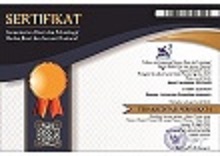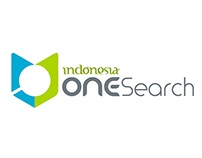OPTIMALISASI DESAIN FASAD BANGUNAN RESTAURANT DI KEBONWARU, BATUNUNGGAL KOTA BANDUNG
Abstract
Abstract: Bandung is a country with a tropical climate. The highest temperature reaches 32 ° C while the highest solar radiation exposure is more than 10 hours. On the other hand, the top speed of the wind only reaches 1 m / s. As a tourist city, building design in Bandung is demanded to be able to offer convenience for tourist visitors. Located at an altitude of 600-900dpl, the city of Bandung in addition to having an average air of 28 ° C, an average humidity of 68, thus significantly influencing the achievement of thermal comfort in the building to be designed. This paper aims to analyze the facade design of recreational-culinary function buildings that are able to respond to the tropical climate, especially those that offer thermal comfort to visitors. The double skin hollow facade system and there are hinges that are able to respond to interactions between buildings, wind, and sun exposure, so that wind speed and sun exposure can be optimally regulated through the dynamic function of the building's façade. Design experiments using the sunhour and flow design plugins to assess solar radiation and wind speed by manipulating facades, especially in the northern orientation can reduce sun exposure in 5-7 hours.
Keywords: Building facade design, tropical building design, thermal comfort.
Abstrak: Bandung merupakan negara dengan iklim tropis. Suhu tertinggi mencapai 32 °C sementara paparan radiasi matahari tertinggi lebih dari 10 jam. Di sisi lain, kecepatan tertinggi angin hanya mencapai 1 m/s. Sebagai kota wisata, desain bangunan di Bandung dituntut mampu menawarkan kenyamanan bagi para pengunjung wisata. Terletak pada ketinggian 600-900dpl, Kota Bandung selain memiliki udara rata-rata 28°C, kelembapan rata-rata 68, sehingga berpengaruh secara signifikan terhadap pencapaian kenyamanan termal pada bangunan yang akan didesain. Tulisan ini bertujuan untuk menganalisis desain fasade pada bangunan fungsi rekreatif-kuliner yang mampu merespon iklim tropis, terutama yang menawarkan kenyamanan termal pengunjungnya. Sistem double skin fasade berongga dan terdapat engsel yang mampu merespon interaksi antara bangunan, angin, dan paparan sinar matahari, sehingga kecepatan angin dan paparan sinar matahari dapat diatur secara optimal melalui fungsi dinamis façade bangunan. Percobaan desain menggunakan plugin sunhour dan flow desain untuk menilai radiasi matahari dan kecepatan angin dengan memanipulasi fasade, terutama di orientasi utara mampu mengurangi paparan matahari dalam 5-7 jam.
Kata Kunci: Desain fasade bangunan, desain bangunan tropis, kenyamanan termal.Full Text:
PDFReferences
Ahmed, R. (2018a). Brise Soleil House. Retrieved October 4, 2018, from https://www.arch2o.com/brise-soleil-house-studio-workshop/
Ahmed, R. (2018b). Restaurant Bossa. Retrieved October 4, 2018, from https://www.arch2o.com/restaurant-bossa-rosenbaum-muti-randolph/
Anjani, H. P. (2017). 10 Tujuan Wisata Paling Populer di Indonesia Tahun 2017.
Anonymity A https://www.dezeen.com/2015/04/04/jya-rchitects-forest-house-restaurant-cheongcheon/, last accessed on August 2018.
ASHRAE. 1992. ANSI/ASHRAE Standard 55-1992, Thermal Environmental Conditions for Human Occupancy, Atlanta: American Society of Heating, Refrigerating, and Air-Conditioning Engineers, Inc.
Bangunan, T. F., Ruang, T., & Arsitetkur, D. A. N. (2013). M.. Suparno Sastra.2013, Inspirasi Fasade Rumah Tinggal. C.V Andi Offset, Yogyakarta. 48 Hal. 3, 48–90.
Fanger PO. 1970. Thermal Comfort. Copenhagen: Danish Technical Press.
Fanger PO. and J. Toftum. 2002. Prediction of Thermal Sensation in Non-Air Conditioned Buildings in Warm Climates
Gallardo, M. Palme, A. Lobato-Cordero, R. Beltrán, and G. Gaona. 2016. Evaluating Thermal Comfort in a Naturally Conditioned Office in a Temperate Climate Zone.
Greenship untuk Gedung Baru. 2012. Ringkasan Kriteria dan Tolak Ukur. GBCI
ISO 7730. Moderate thermal environments – Determination of the PMV and PPD indices and specification of the conditions for thermal comfort.
Meteoblue. (2018). Bandung Wind Rose. Retrieved October 4, 2018, from https://www.meteoblue.com/en/weather/archive/windrose/bandung_indonesia_1650357?daterange=2018-09-19+to+2018-09-26¶ms=32%3B10+m+above+gnd%3B31%3B10+m+above+gnd&polarunit=hour°ree_resolution=22.5&value_resolution=5&windspeedunit=METER_PER_SECOND
Meteoblue Bandung https://www.meteoblue.com/en/weather/forecast/modelclimate/bandung_indonesia_ 1650357/ , last accessed on August 2018.
M. G. H. M. Kapantow, Charles R. Ngangi, and Eyverson Ruauw. 2014. Tingkat Kepuasan Konsumen di Restoran Mcdonald’s Manado.
M. S. Rahma, P. Wardono, and L. N. Budiarti. 2017. Pengaruh Elemen Interior Restoran Terhadap Pengalaman Nostalgia Konsumen.
Mulyadi, R. (2016). Kinerja Fasad Selubung Ganda dalam Menurunkan Konsumsi Energi untuk Pendinginan pada Bangunan Gedung, 1037–1042.
Paramita and M. D. Koerniawan. 2013. Solar Envelope Assessment in Tropical Region Building Case Study: Vertical Settlement in Bandung, Indonesia
Permana, A. Y., dan Wijaya, K. (2013). Education City As Identity of Bandung City. In International Conference on Urban Heritage and Sustainable Infrastrcture Development (UHSID) (pp. 15–19). Semarang: Architecture Departement of Diponegoro University.
Permana, A. Y., dan Wijaya, K. (2017). Spatial change transformation of educational areas in Bandung. In IOP Conference Series: Earth and Environmental Science (International Conference on Sustainable in Architecture Design Urbanism/ICSADU) (Vol. 99, p. 012029). Semarang: IOP Conference Series: Earth and Environmental Science. https://doi.org/10.1088/1755-1315/99/1/012029
Permana, A.Y., Susanti, I., dan Wijaya, K. 2017. Kajian Optimalisasi Fasad Bangunan Rumah Tinggal dalam menunjang Program Net Zero Energy Building (NZE-Bs). Jurnal Arsitektur Arcade, vol. 1 no. 1, hal 27-34
R. Kriteria, D. a N. Tolok, and D. R. Development. 2012. Greenship Rating Tools Greenship Untuk Gedung Baru.
S. Hestiningrum. 2014. Perancangan Interior Fine Dining Restaurant.
S. Hirabayashi, T. Abe, F. Imamura, and C. Morioka. 2018. Development of a distributed modeling framework to estimate thermal comfort along 2020 Tokyo Olympic marathon course.
DOI: https://doi.org/10.17509/jaz.v2i2.17470
Refbacks
- There are currently no refbacks.
Copyright (c) 2019 Jurnal Arsitektur ZONASI

This work is licensed under a Creative Commons Attribution-ShareAlike 4.0 International License.





